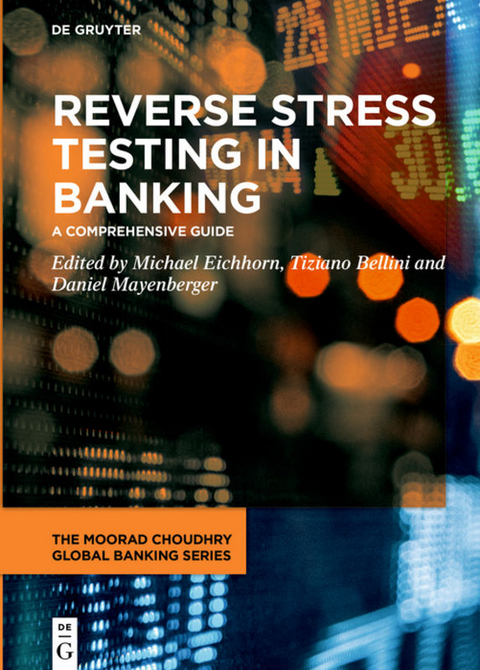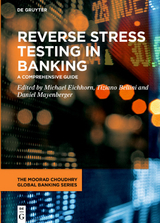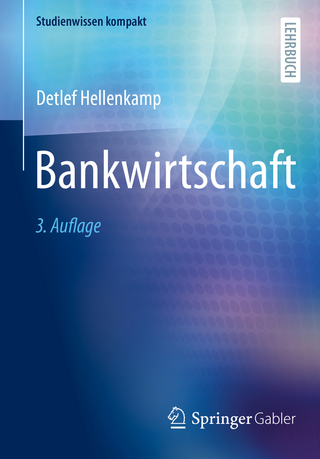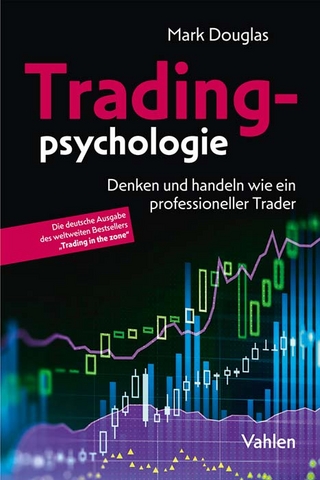Reverse Stress Testing in Banking
A Comprehensive Guide
Seiten
Reverse stress testing was introduced in risk management as a regulatory tool for financial institutions more than a decade ago. The recent Covid-19 crisis illustrates its relevance and highlights the need for a systematic re-thinking of tail risks in the banking sector. This book addresses the need for practical guidance describing the entire reverse stress testing process. Reverse Stress Testing in Banking features contributions from a diverse range of established practitioners and academics. Organized in six parts, the book presents a series of contributions providing an in-depth understanding of: Regulatory requirements and ways to address them Quantitative and qualitative approaches to apply reverse stress testing at different levels – from investment portfolios and individual banks to the entire banking system The use of artificial intelligence, machine learning and quantum computing to gain insights into and address banks’ structural weaknesses Opportunities to co-integrate reverse stress testing with recovery and resolution planning Governance and processes for board members and C-suite executives Readers will benefit from the case studies, use cases from practitioners, discussion questions, recommendations and innovative practices provided in this insightful and pioneering book.
Michael Eichhorn, Managing Director, Credit Suisse; Tiziano Bellini, Director, Blackrock
FOREWORD BY PROF. MOORAD CHOUDHRY
CHAPTER I: What is Reverse Stress Testing (and how does it differ from other risk analytics)?
- Definition
- What is it and why to use it
- Overview of reverse stress testing landscape so far (Tiziano Bellini, Michael Eichhorn)
CHAPTER II: How to perform Reverse Stress Testing
- A generic process driven approach (Michael Eichhorn, Philippe Mangold)
- Definition of failure points
- Vulnerability analysis
- Scenario design and parameterization
- Plausibility check and management actions
- Monitoring and reporting
CHAPTER III: What are the regulatory requirements?
- Regulatory requirements and considerations from a Board of Directors' perspective (Melanie Eichhorn-Schurig)
- Requirements by regulator and supervisory body (BCBS, EBA, FED, PRA)
- Considerations from Boards' perspective
CHAPTER IV: What can be learned from past failures?
- Why do banks fail? (TBC)
- What went wrong in the 2007-2009 crisis? (Tiziano Bellini)
- Roads to ruin - A study of major risk events (Prof. Chris Parsons, TBC)
CHAPTER V: What can be learned from practical use cases?
- Qualitative reverse stress testing
- Case study: Pension Protection Fund (Jean-Pierre Charmille)
- Case study: Moody's Rating Agency (TBC)
- Case study: Automotive (Grundke, TBC)
- Quantitative reverse stress testing
- Case study: Alpha Bank (Tiziano Bellini)
- Case study: Interbank Networks (Fabio Caccioli)
- Case study: Axioma Inc (Robert Stamicar)
- Case study: EVM Tech (Mirzai, Bahram)
CHAPTER VI: What can be learned from planning work?
- Linking Reverse Stress Testing to Risk Appetite and Risk Capacity (Anand Saxena)
- Linking Reverse Stress Testing to Recovery & Resolution Planning (Ahmed Nasir)
| Erscheinungsdatum | 12.05.2021 |
|---|---|
| Reihe/Serie | The Moorad Choudhry Global Banking Series |
| Zusatzinfo | 20 b/w and 128 col. ill., 40 b/w tbl. |
| Verlagsort | Berlin/Boston |
| Sprache | englisch |
| Maße | 170 x 240 mm |
| Gewicht | 1129 g |
| Themenwelt | Betriebswirtschaft / Management ► Spezielle Betriebswirtschaftslehre ► Bankbetriebslehre |
| Schlagworte | Integrated Stress Testing • Regulators • Reverse Stress Testing |
| ISBN-10 | 3-11-064482-7 / 3110644827 |
| ISBN-13 | 978-3-11-064482-1 / 9783110644821 |
| Zustand | Neuware |
| Haben Sie eine Frage zum Produkt? |
Mehr entdecken
aus dem Bereich
aus dem Bereich
warum unser Geld stirbt und wie Sie davon profitieren
Buch | Hardcover (2024)
FinanzBuch (Verlag)
30,00 €
denken und handeln wie ein professioneller Trader
Buch | Softcover (2023)
Vahlen, Franz (Verlag)
36,90 €




